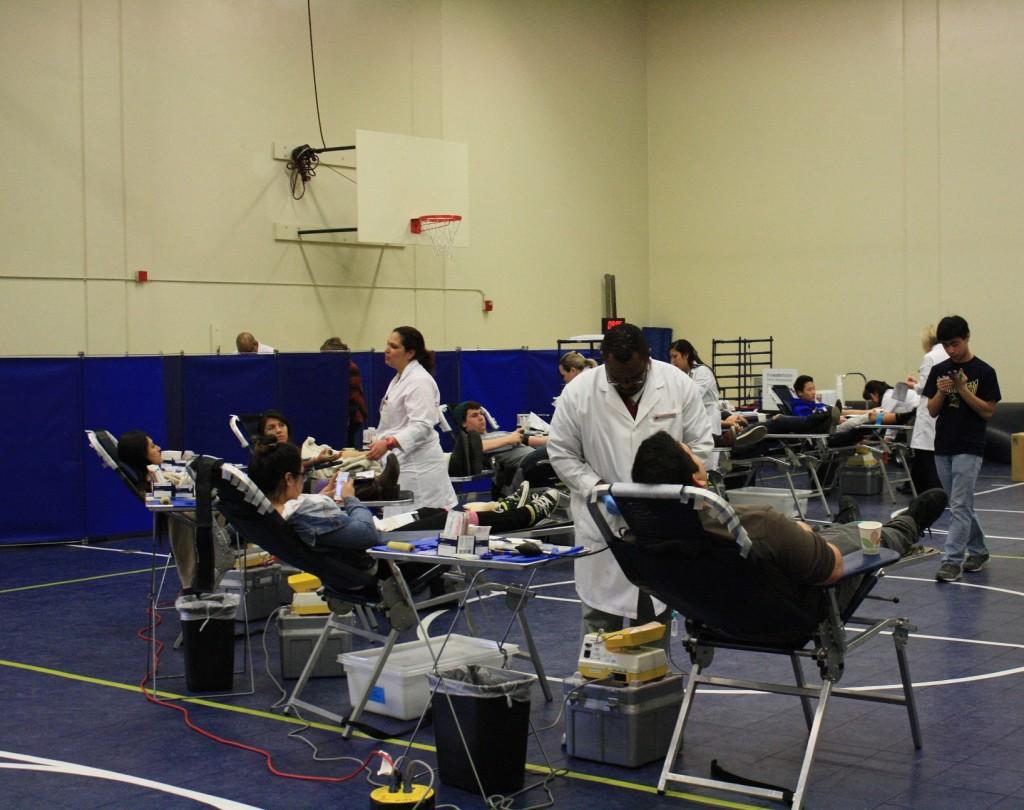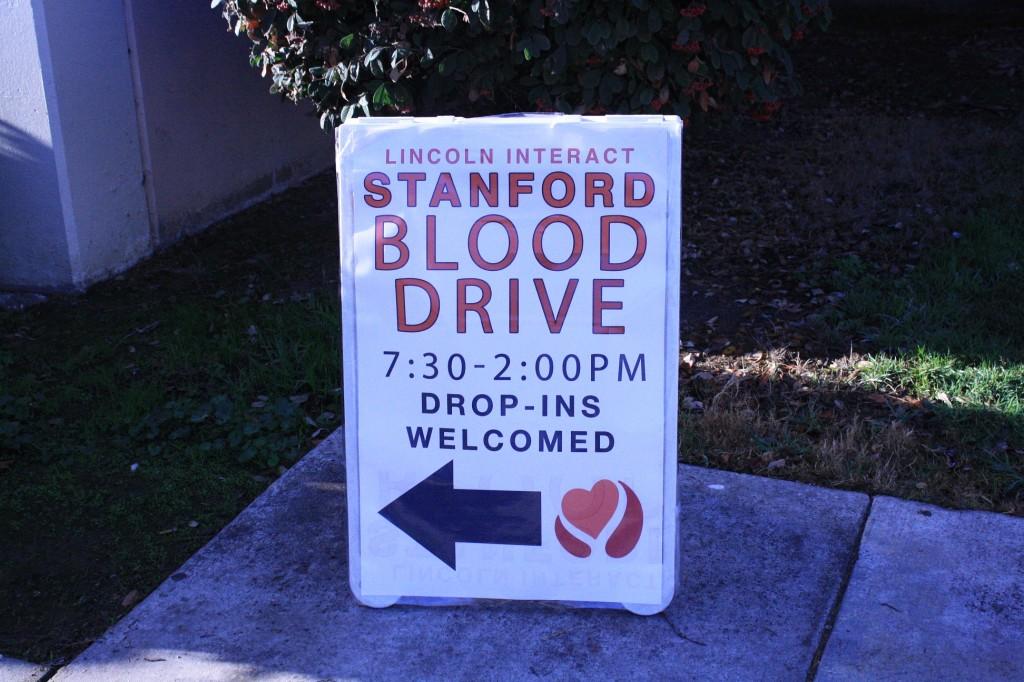200+ Students Donate Blood At Interact Blood Drive
February 3, 2014
They want your blood. Well, maybe just a pint of it…
On Friday, January 31, from 7:30 a.m. to 2:00 p.m., Club Interact hosted its annual blood drive in Lincoln’s small gym. The drive, sponsored and carried out by Stanford’s medical center, drew more than 200 blood donors.
Ms. Thai, Interact Club adviser, said, “We have 200-plus signed up to donate. There’s students, teachers, and community people.”
The event required a lot of leg work and coordination to make sure everything ran smoothly. “They [Stanford] were here at 6:15 and we were here at 6:00 to set up,” Ms. Thai said.
Interact Club members were excused from a couple of class periods to help out as runners, assistants to the medical staff, escorts, and also to run the donor recovery area. Justin Jio, sophomore, stated about his job, “what our role is, is to get all the supplies the medical people need, and also to escort the students over to the recovery table so they don’t faint.”
Students who signed up to donate were pulled out from their regular schedule for one class period. In the gym, they queued up in a back waiting room, then were called by staff to go into one of six blue cubicles for a consultation to make sure they were eligible to donate and aware of any risks. If all checked out, the student was led to a half-circle of about thirteen donation chairs.
Then came the needles. A medical staff member selected a vain in each participant’s arm, drawing out one “unit,” or pint, of blood, with the actual drawing of blood only lasting about 15 minutes. After they finished, students were provided with refreshments such as popcorn and cookies and given time to recover from the (literally) draining experience so they could resume their daily activities without a hitch.
Alisala Nunes, freshman and Interact volunteer, commented, “they give blood and lose some nutrients from that, so we have to bring their blood sugar back up by giving them sugary food.”
The prospect of having a needle jabbed into your arm can be frightening at first, even if you have done it before. Amanda Pipkin, senior and second-time donor, said about her experience, “it was a little bit scary, but not much. I would do it again because I want to help people.”
Zachary Pardo, also a senior, said, “it was not that bad. The worst part is the anticipation.” Pardo, like Pipkin, had participated in the Blood Drive in previous years.
Though for some, it was the first time donating blood. Stephanie Peña, senior, was all new to the experience. She admitted, “the needle, it kind of freaked me out, it was huge.”
People decided to donate for various reasons. One student mentioned that he had had brain surgery in the past, which had required him to receive his own transfusions of blood. He saw blood donation as an opportunity to give back, and to help others in a similar position to the one he had been in.
Sarah Holmes, junior, had a perspective similar to most students who showed up to the Drive, saying, “It’s for a good cause, and I know it’s gonna help someone.”
And Pardo commented, “if I ever needed it, I’d want someone to have done it for me.”
Blood transfusions are often a necessity for life, and blood drives across the world play a huge part in gathering the sufficient stockpiles of blood. In this case, all blood donated on Friday will go to patients in hospitals throughout the Bay Area.
Donations come from four general blood groups, which are further divided into dozens of blood types, like B-positive or O-negative. Donating can be a regular event (up to every 56 days for whole blood or every 28 days for plasma), or it can be a one-time or sporadic type of thing.
You may have heard stories about James Harrison, known as “the man with the golden arm.” Harrison is an Australian blood plasma donor whose rare type of plasma contains a strong antibody that is effective at treating Rhesus Disease. His over 1000 blood plasma donations, which he has given every 3 weeks for the past 57 years, are estimated to have saved the lives of 2.4 million babies with Rhesus Disease and other related conditions. Of course, not everyone has to have Harrison’s level of involvement, but his story gives an idea of all the good work that is made possible by blood and plasma donations.
One thing is for certain: all the blood drawn last Friday from Lincoln students will certainly find a good home in someone who really needs it tomorrow.

